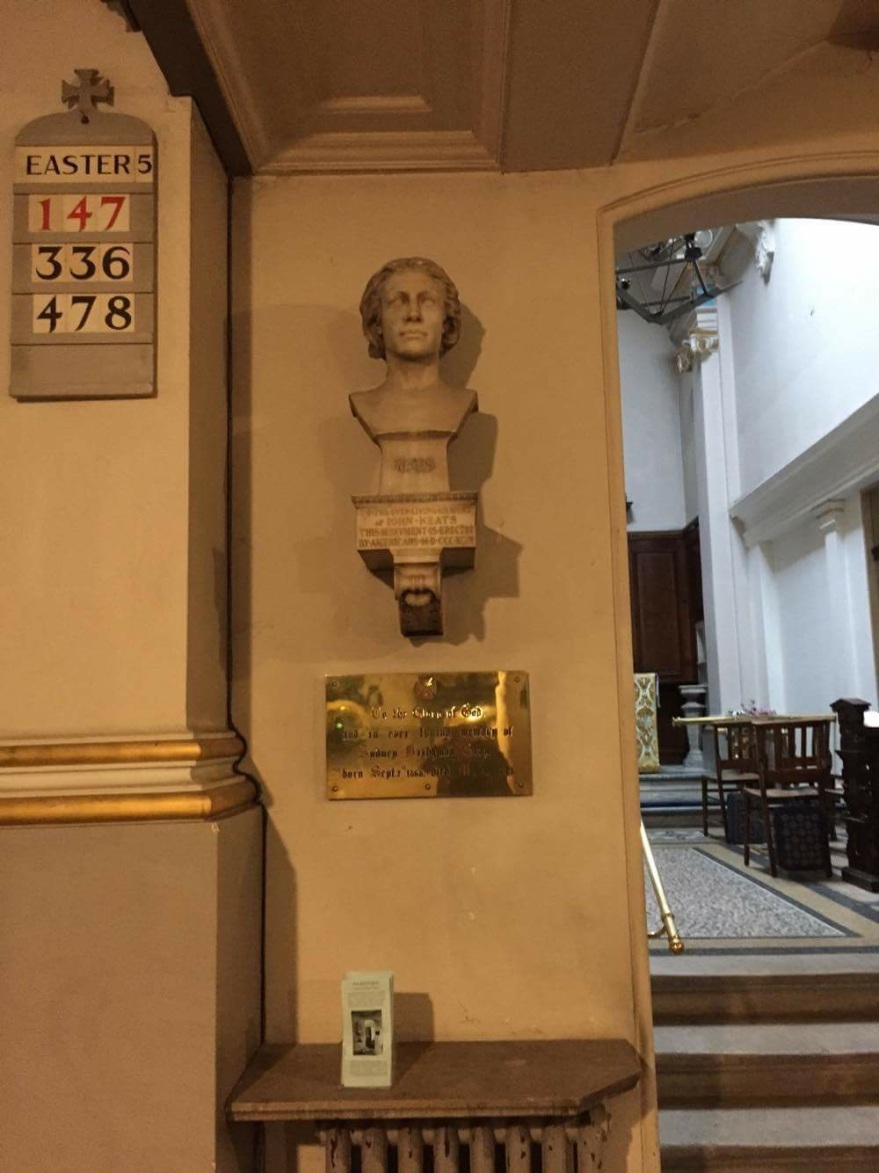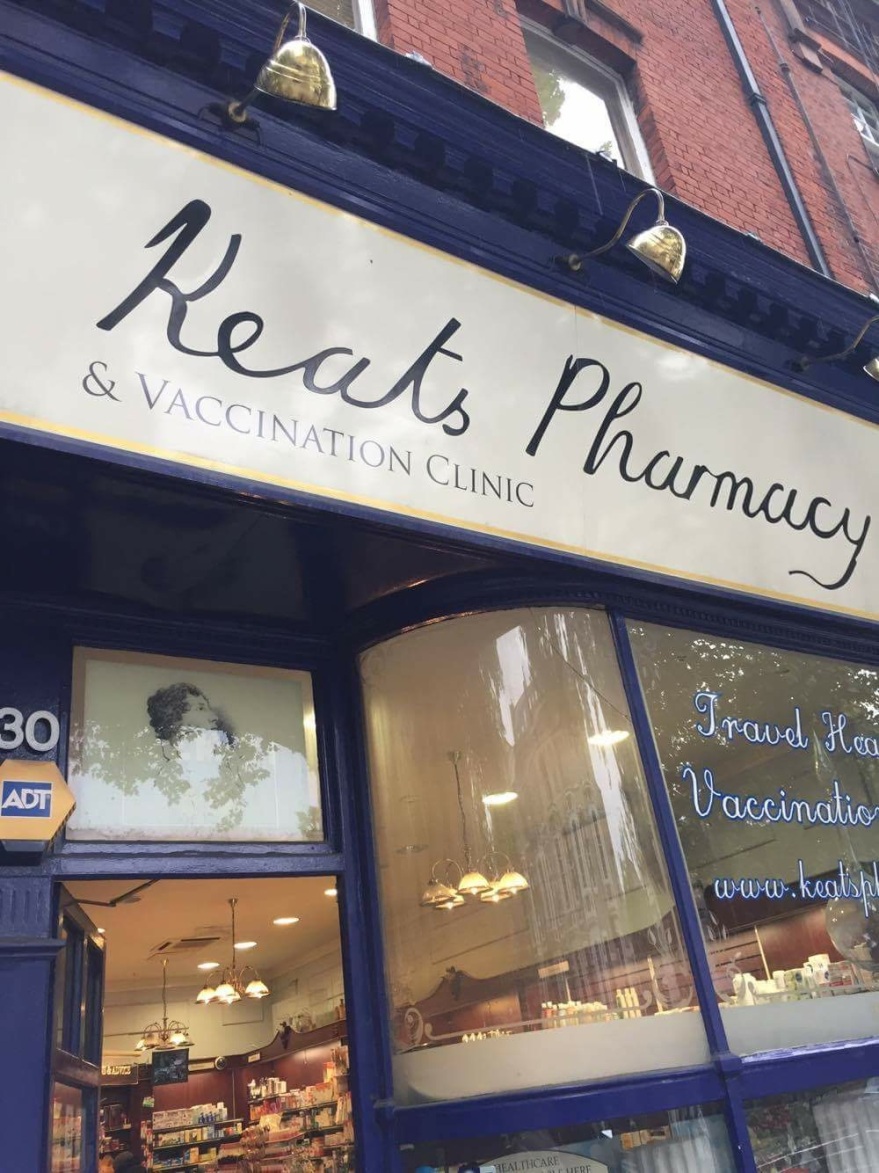Anita Miller led a wonderful walk. These were the main stops:
Begin at Keats House
Church Row: Street of fine early Georgian houses with original features
St John’s Church, Church Row: Bust of Keats inside church

Holly Bush Tavern: 200 year old inn leading to viewpoint over London with view of The Shard (next to Guys Hospital)
Vale of Health: Site of Leigh Hunt’s cottage, where Keats stayed overnight many times
Wells Tavern, Wells Walk: Site of 1, Well Walk, where Keats lodged with his brothers before moving to Wentworth Place
Keats Seat: Corner of Well Walk
Boundary path: ancient track through Hampstead Heath, favorite walk of Keats and Fanny
Six Facts:
- John Keats was inspired to write some of his greatest works over the course of two months (April-May) in the backyard of Wentworth Place (now the Keats House).
- “Ode to a Nightingale” was written under a plum tree that still stands.
- Keats’s fell in love and eventually became engaged to Fanny Brawne. She was his neighbor, who moved into the other half of Wentworth Place after it was vacated by Charles Armitage Brown. She is buried in Brompton Cemetery, just around the corner from my residence.
- Tom Keats, John’s brother, died of consumption in the same room as John first displayed symptoms of tuberculosis.
- “The Eve of St. Agnes” and “The Eve of St Mark,” along with the first version of “Bright Star” were inspired by his lover–before Fanny–Isabella Jones, who was one of the first people notified in London of Keats’s death.
- John Keats, in attempting to save money, decided to ride on the outside of a coach back to Wentworth Place in Hampstead. He was caught in a torrential rain storm and came down with the bout of a “cold” that would eventually kill him. When his friend Charles Brown helped him to bed, Keats coughed blood and said “That is blood from my mouth…I know the colour of that blood; – it is arterial blood…that drop of blood is my death-warrant; – I must die.” He succumbed within a year.
Four Questions:
- Did Fanny Brawne know about Isabella Jones and vice versa?
- Keats was in contact with Wordsworth and Coleridge, but what did they think of his poetry?
- How would have Keats’s poetry changed if he had been received favorably by critics? Would he have gained financial security and lived longer?
- What inspired him to write “Ode to a Grecian Urn?” An object, an old poem, somewhere in London or somewhere in Hampstead?
Finally, a little tragic irony:

Farewell, for now!
A.A.M.






















